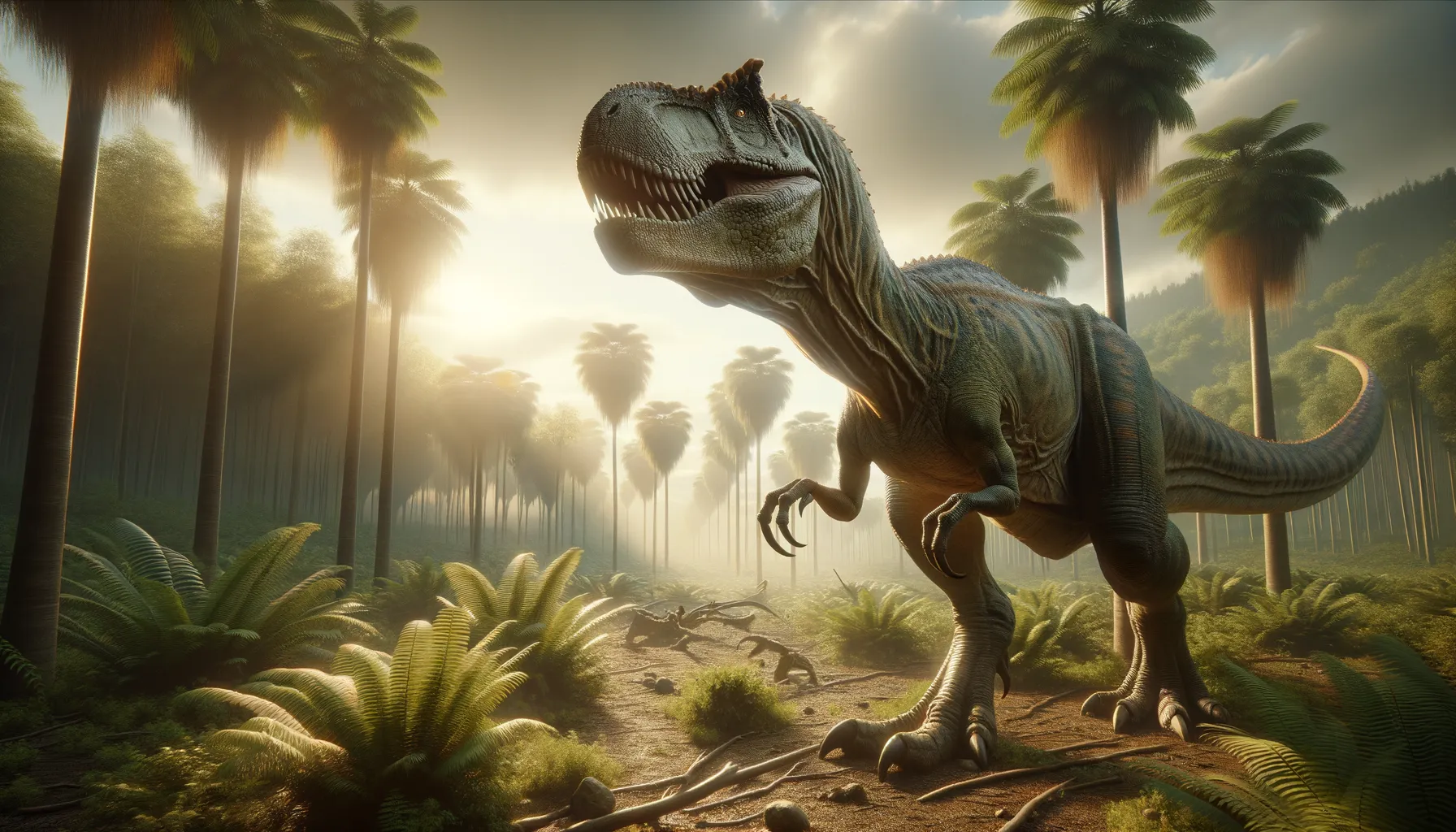
Suzhousaurus
The gentle giant with formidable claws.
Period
Cretaceous
Length
Measured up to 6 meters in length.
Height
Stood approximately 2 meters tall at the hips.
Weight
Estimated to weigh around 1 ton.
Suzhousaurus is a member of the therizinosaur group, characterized by its large claws, long arms, and herbivorous diet. Despite its fearsome appearance, it was a slow-moving dinosaur that likely fed on plants in the lush environments of the Cretaceous period. Its fossils provide important insights into the evolution of therizinosaurs, which were unique among theropods for their plant-eating habits.
Diet
Suzhousaurus was herbivorous, feeding on a variety of plants. Its long neck allowed it to reach high vegetation, suggesting it may have foraged in forests or dense shrublands.
Hunting
As a herbivore, Suzhousaurus did not hunt for food but instead foraged for plant materials. Its large claws, though intimidating, were likely used for pulling down branches rather than capturing prey.
Environmental challenges
Living during the Cretaceous period, Suzhousaurus had to adapt to changing climates and competition for food. The shifting landscapes could have also posed challenges in finding consistent food sources. Additionally, predatory dinosaurs presented a continuous threat, necessitating strategies for survival and defense.
Speed
Slow mover, similar to other therizinosaurs.
Lifespan
Could have lived several decades, like other dinosaurs.
First discovery
Initially discovered in western China in 2007.
Fun Facts
- Suzhousaurus was a type of therizinosaur dinosaur, known for its distinctive long claws and herbivorous diet.
- Fossils of Suzhousaurus were discovered in China, with their name reflecting the Suzhou region.
- This dinosaur lived during the early part of the Cretaceous period, about 125 million years ago.
- Suzhousaurus was a feathered dinosaur, similar to the appearance of a giant, prehistoric bird.
- Unlike many other dinosaurs, Suzhousaurus was not a speedy runner and likely moved slowly through its environment while foraging for plants.
- The long claws of Suzhousaurus were probably used to grasp branches to pull down leaves for eating.
- Suzhousaurus was relatively large for a therizinosaur, with estimations of its length reaching up to 6 meters or about 20 feet.
Growth and Development
Suzhousaurus likely experienced gradual growth, with specific stages marking its development into a fully mature adult. Juveniles may have stayed close to adults for protection. The development of its distinctive claws and snout would have happened over several juvenile stages, aiding in feeding efficiency and self-defense.
Habitat
It inhabited forested regions with plenty of vegetation, taking advantage of dense shrubbery for food. The environment provided both food and shelter from predators. Such areas would have been rich in resources due to the diverse plant life, supporting a wide range of species.
Interaction with other species
Suzhousaurus likely coexisted with other herbivorous dinosaurs, competing for resources. Predatory dinosaurs in the same regions may have occasionally targeted it, though its large claws may have deterred some attackers. Additionally, it could have played a role in maintaining the local vegetation structure through its feeding habits.
Natural lifespan
Suzhousaurus likely had a natural lifespan of several decades.
Reproduction
Reproduction for Suzhousaurus likely involved egg-laying, similar to other theropods. Little is known about specific nesting behaviors, but it is possible that communal nesting sites were used. Parental care might have been minimal, with hatchlings being relatively self-sufficient soon after birth.
Social behaviour
This dinosaur may have moved in small groups for increased protection against predators. Social structures, if present, would have involved loose affiliations primarily for mating and protection. While not overtly social, group living provided some benefits in terms of survival and food access.
Fossil locations
Suzhousaurus fossils have been primarily found in the Xinminbao Group in Gansu Province, China. Excavations in this region have yielded valuable insights into the diversity and distribution of therizinosaurs. These sites contribute significantly to our understanding of Cretaceous ecosystems in Asia.
